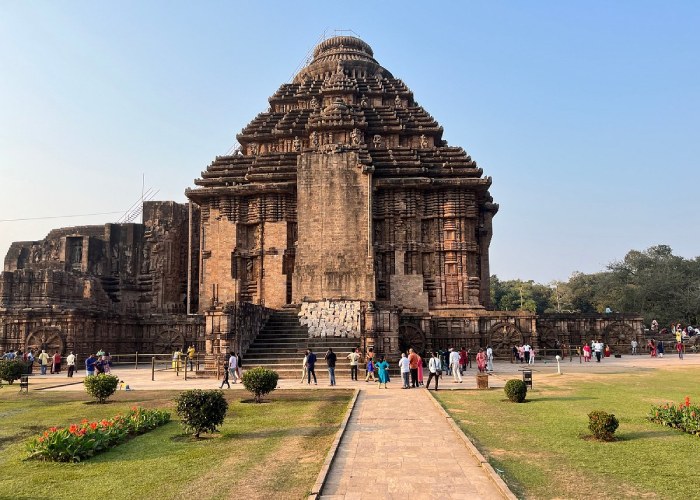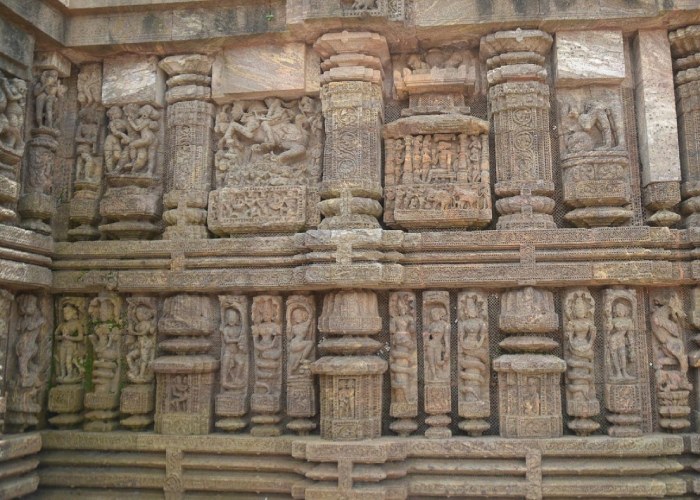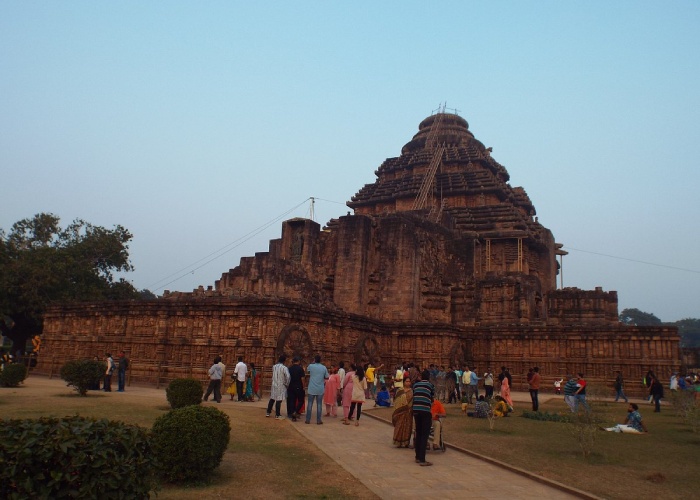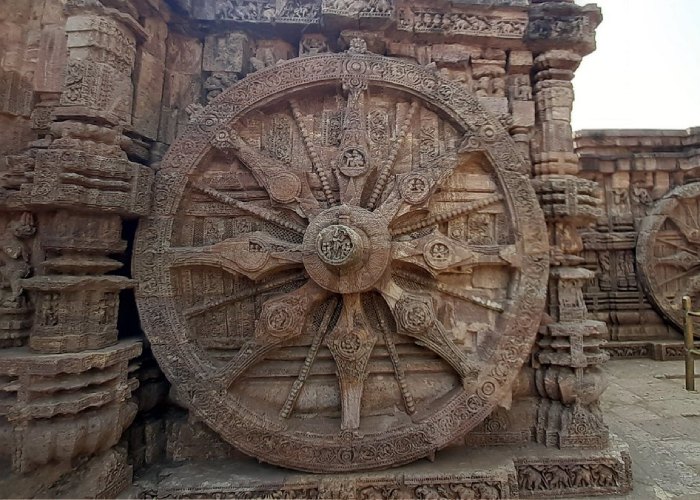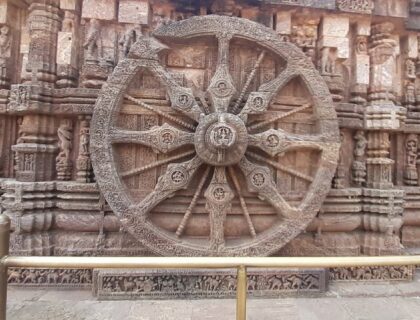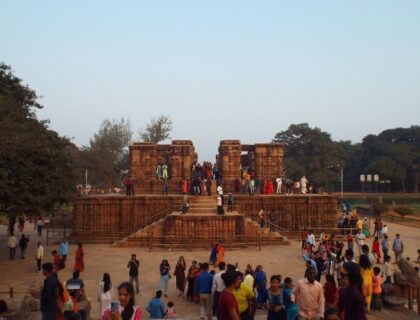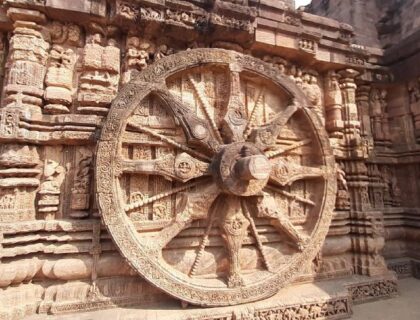Konark Sun Temple
Konark Sun Temple, also known as Konark, is an architectural marvel of eastern India and a symbol of India’s heritage. It is located in the eastern state of Odisha (previously known as Orissa), India, and is a popular tourist destination. Konark is home to a large temple dedicated to the Sun God.
The term ‘Konark’ is a combination of the words ‘Kona’ and ‘Arka’. ‘Kona’ means ‘Corner,’ and ‘Arka’ means ‘Sun,’ so it becomes ‘Corner of the Sun’ when combined. The Konark Sun Temple is dedicated to the Sun God and is located in the north-eastern corner of Puri. Arka chetra is another name for Konark.
Special Significance of Konark Sun Temple
Konark Sun Temple, dedicated to the Sun God, was built in the 13th century CE by King Narasimhadeva I of the Eastern Ganga dynasty to commemorate his victory over Muslim invaders. This temple tower was used for navigation by European sailors, but it was dubbed the Black Pagoda due to the frequent shipwrecks that occurred along the coast.
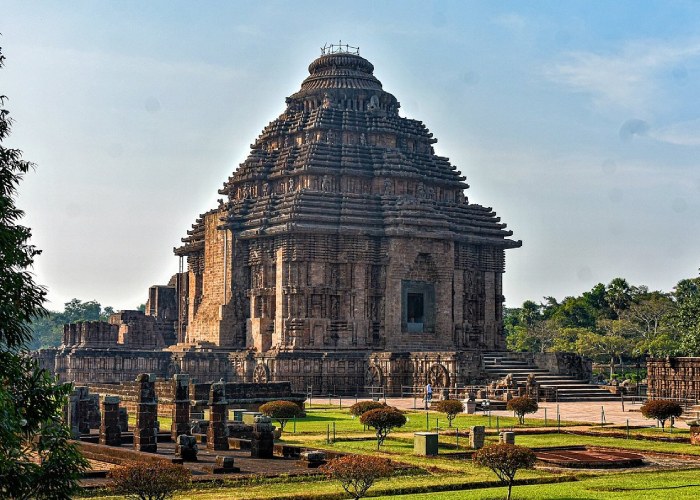
This temple is one of India’s grandest and has been a UNESCO World Heritage Site since 1984. In the 15th century, the Muslim Yavana army sacked Konark. Priests smuggled the temple’s central statue to Puri, but the Sun Temple was severely damaged in the attack. The ruins of this temple were discovered in the late nineteenth century.
Legend of Konark Sun Temple
According to legend, Samba, the king of Krishna and Jambavati, entered Krishna’s wives’ bathing chamber and was cursed with leprosy by Krishna. It was decided that if he worshipped the sun God on the sea coast northeast of Puri, he would be free of the curse. As a result, Samba travelled to Konaditya Kshetra, where he discovered an image of Surya seated on a lotus, worshipped him, and was freed from his curse.
History of Konark Sun Temple
King Narasimhadeva of Eastern Ganga constructed the Konarak Sun Temple around 1250 AD. According to local legend, the temple possessed tremendous power. Two extremely powerful magnets were built into the tower, allowing the king’s throne to hover in mid-air. European seafarers sailing off the coast named it the Black Pagoda. The temple’s magnets influenced the tidal pattern, causing frequent shipwrecks along the coast.

In the 15th century, the Muslim Yavana army attacked Konark. Priests smuggled the Sun Temple central statue to Puri, but the exteriors were severely damaged. Nature’s destruction continued. The sea receded over the centuries, allowing sand and salty breezes to engulf and erode the architectural brilliance. The temple was submerged in the sands until the early twentieth century.
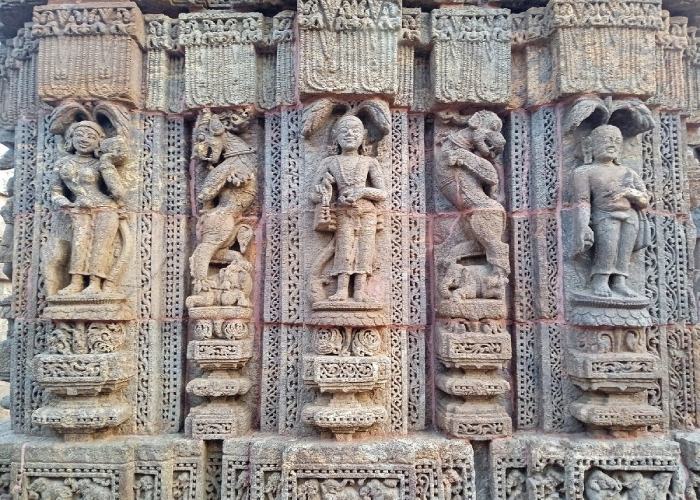
The Konarak temple was planned as a massive and colossal chariot drawn by a team of seven galloping horses. The entire temple was designed with twelve pairs of beautifully carved stone wheels in mind. The horses were designed in such a way that the Sun God (Surya) drives the chariot from within the garbhagriha. The Konarak temple also represents the pinnacle of temple building architecture in Orissa.
The architecture of Konark Sun Temple
The Konark Sun Temple was built in 1250 CE during the reign of the Eastern Ganga King Narsimhadeva-1 from stone in the shape of a giant ornamented chariot dedicated to the Sun god, Surya. Surya is depicted in Hindu Vedic iconography as rising in the east and racing across the sky in a chariot drawn by seven horses. He is typically depicted as a resplendent standing individual holding a lotus flower in both hands while riding the chariot marshalled by the charioteer Aruna.

The seven horses are named after the seven metres of Sanskrit prosody: Gayatri, Brihati, Ushnih, Jagati, Trishtubha, Anushtubha, and Pankti. Surya is usually flanked by two females representing the dawn goddesses, Usha and Pratyusha. The goddesses are shown shooting arrows, a symbol of their boldness in confronting the darkness. The architecture is also symbolic, with the chariot’s twelve pairs of wheels representing the Hindu calendar’s 12 months, each month divided into two cycles (Shukla and Krishna).

The Konark temple displays this iconography on a grand scale. It has 24 intricately carved stone wheels with a diameter of nearly 12 feet (3.7 m) that are pulled by a team of seven horses. The chariot-shaped temple appears to emerge from the depths of the blue sea carrying the sun when viewed from inland during dawn and sunrise.
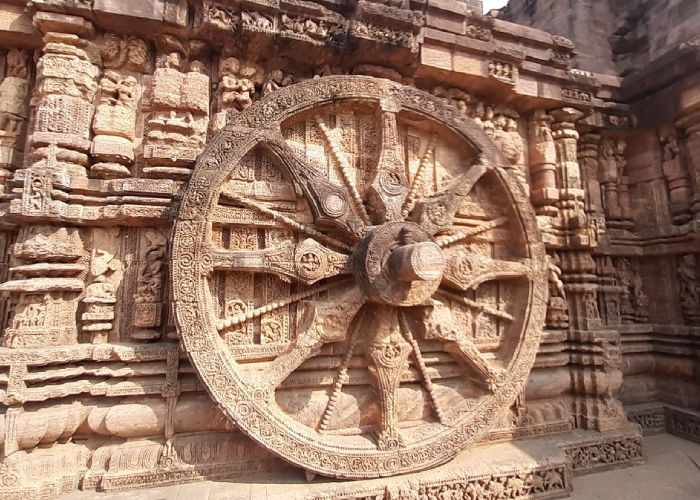
The temple design incorporates all of the traditional elements of a Hindu temple in a square format. The ground plan, as well as the layout of sculptures and reliefs, follow the square and circle geometry found in Odisha temple design texts such as the Silpasarini, according to Kapila Vatsyayan. Other Hindu temples in Odisha and elsewhere are inspired by this mandala structure.

The temple’s main entrance is on the eastern side. The original temple had a main sanctum sanctorum, but it collapsed in 1837 due to the weight of the heavy structure and the area’s weak soil. The audience hall is the most prominent structure among the surviving ruins. The temple also has a ‘Nat Mandapa’ or Dancing Hall with intricate carvings.
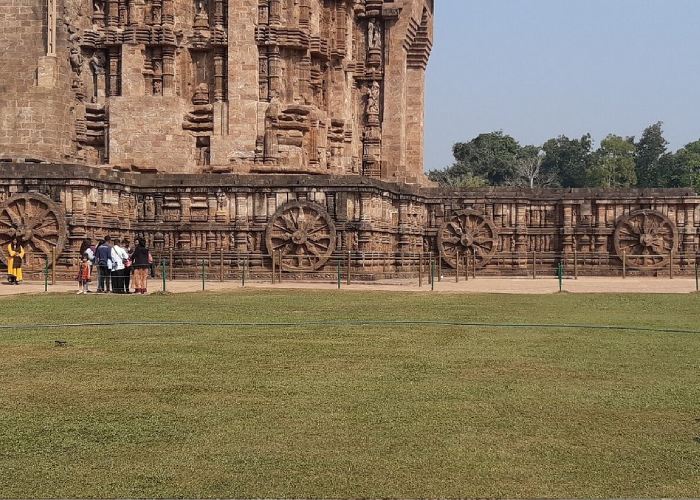
At the entrance, two massive lions appear to be guarding the temple. The main shrine is reached via a flight of stairs. The walls of the temple are adorned with intricate carvings, sculptures, and bas-reliefs.
The main sanctum represents Lord Surya’s regal stride. The lovely image is made of high-quality green chlorite. Nearby, two smaller ruined temples, Vaishnava Temple and Mayadevi Temple, have been discovered. Exquisite stone sculptures on the temple walls depict deities, animals, floral patterns, sensuous women, mythical beasts, and aquatic monsters.
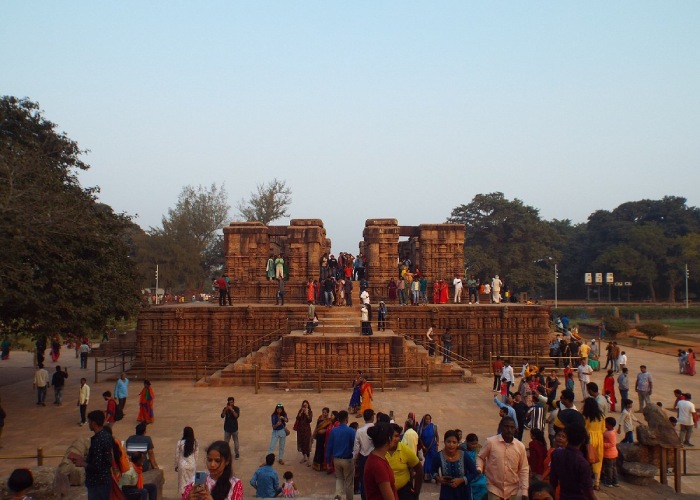
The 24 massive wheels are exquisitely carved, and each of the eight spokes bears a medallion with figurative carvings. Military processions and hunting scenes with thousands of rampaging elephants are depicted in friezes above and below the wheels.
Facts about Konark Sun Temple
- Konark Sun Temple is an ancient Hindu temple located in the heart of Konark town in Orissa state, 1.5 kilometres from Konark Bus Station.
- Konark Sun Temple, known throughout the world for its architecture, is one of the most popular places to visit in Konark and is frequently used to promote Konark tourism.
- The Konark Sun Temple is built in the shape of a massive chariot for the Hindu Sun God. The chariot is made up of 12 stone-carved wheels and a team of seven galloping horses (one of which survives).
- The temple represents the passage of time. The seven horses that pull the sun temple eastward towards the dawn symbolise the seven days of the week.
- The 12 pairs of wheels represent the 12 months of the year, and each wheel’s eight spokes represent the eight stages of the day.
- Just Like Khajuraho Temple there are also carved sculptures of musicians and dancers, as well as erotic sculptures. Another masterpiece is the Shiva Nataraja sculpture performing the cosmic dance.
- The temple’s exteriors are adorned with sculptures of historical deities, divinely beautiful women (apsaras), animals, floral patterns, beasts, and aquatic monsters. The 24 massive wheels are exquisitely carved, and each of the eight spokes is adorned with a medallion with figurative carvings.
- According to the evidence, three different types of stones were used in the temple’s construction. The stone khondalite was used extensively in the temple’s construction, while high-quality chlorite was used for the doorjamb and some sculptures.
- The ruins of this temple were discovered in the late nineteenth century. The tower over the Garbagriha is missing, but the Jagmohana is still standing and impressive even in its current state.
- Every day, the Sun’s rays would reach the Deul (main temple tower) from the coast and reflect off the diamond in the idol’s centre.
- A heavy magnet was placed on top of the temple, and iron plates were crammed between every two stones. The magnet arrangement was said to have caused the idol to float in the air. The top magnet is said to have disturbed compasses for coastal voyagers and was later removed.
Best Time To Visit Temple
The temple can be best visited and explored during the winter season as during the summer seasons, UV rays from sunlight are maximum. The best month is between July to Feb.
Entry Fee In Temple
Rs. 30 for Indians, Rs. 500 for Foreigners, Rs. 200 for Guide
How To reach Konark Sun Temple
The Konark Sun Temple is located in Konark (Puri), Odissa, India.
By Air: The Bhubaneswar airport is the nearest air connection. The domestic airport is 64 km away and connects to Kolkata, Delhi, Hyderabad, Mumbai and Chennai with frequent connections.
By Rail: The nearest railway station is Puri. The city railway station is 31 kilometres away from the temple.
By Raod: Odisha State Public Transport buses connect Konark to Puri, Bhubaneswar, and other cities via National and State highways.
Also, Read – Meenakshi Amman Temple
Location
Facilities
- Drinking Water
- Restaurants Nearby
- Resting Room


